Our view at Stack - MemberSpace allows you to add membership functionality to any website. It offers customizable membership options, flexible payment gateways including Apple Pay and Google Pay, drip content, and tiered access. It provides bank-grade security, GDPR compliance, and easy member management with analytics and email campaigns.
We’ve made it easier for your customers to sign up for your membership and purchase digital products with MemberSpace!
Customers can now sign up using their Google account, which means fewer steps to convert website visitors into paying customers. We’ve also made a few enhancements to your signup and login forms to support easier member signup.
Let’s take a look at what’s new!
Sign up with Google social sign-on
Customers no longer need to create a new account to sign up for your membership or purchase your digital products. Instead, your signup form now gives them the option to continue with Google.
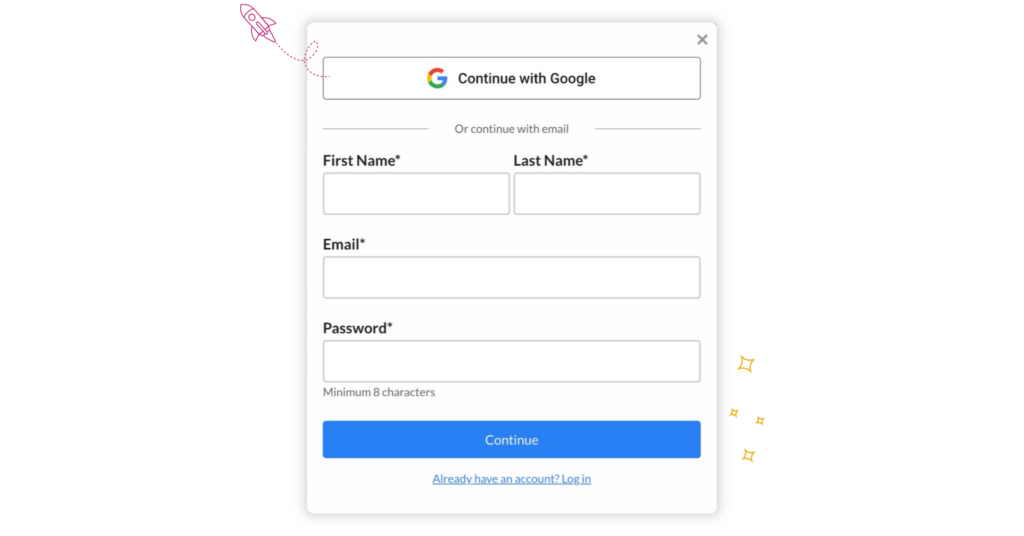
After authenticating with Google, their MemberSpace account will automatically be created. If you’ve created any custom signup fields to be completed during signup, those will still show after Google authentication. Otherwise, customers will then be prompted to join a specific plan or choose any of your public plans (depending on the signup link they used).
Enabling and disabling Google SSO
Google social sign-on (SSO) will automatically be enabled for new sites connected to MemberSpace starting April 30th, 2024.
If you connected your site before that date and want to enable Google SSO, or if you want to disable it, you can manage this feature in the Look & Feel editor within your MemberSpace admin.
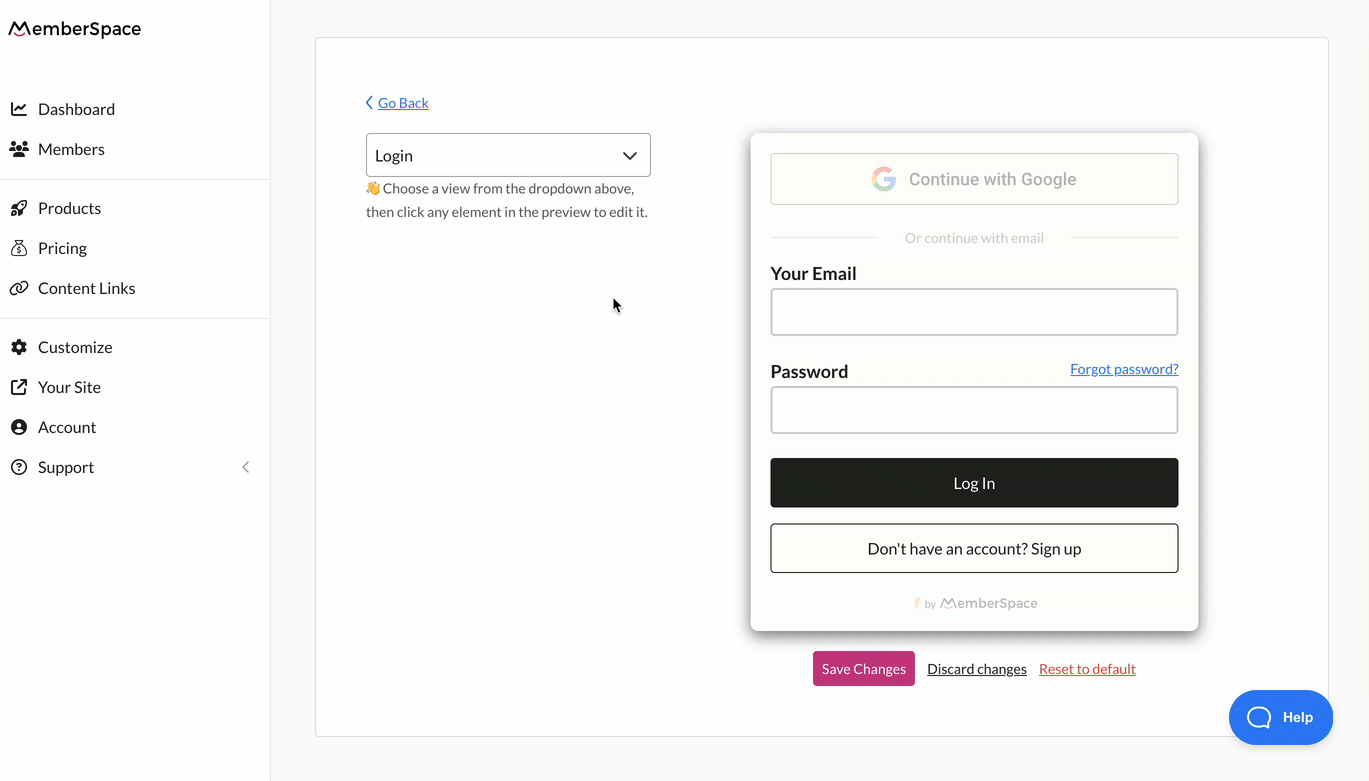
Enable Google SSO
Customizing the Google SSO button
You can also customize how the Google SSO option appears on your signup and login forms within the Look & Feel editor. Change the button theme and shape to seamlessly fit your brand.
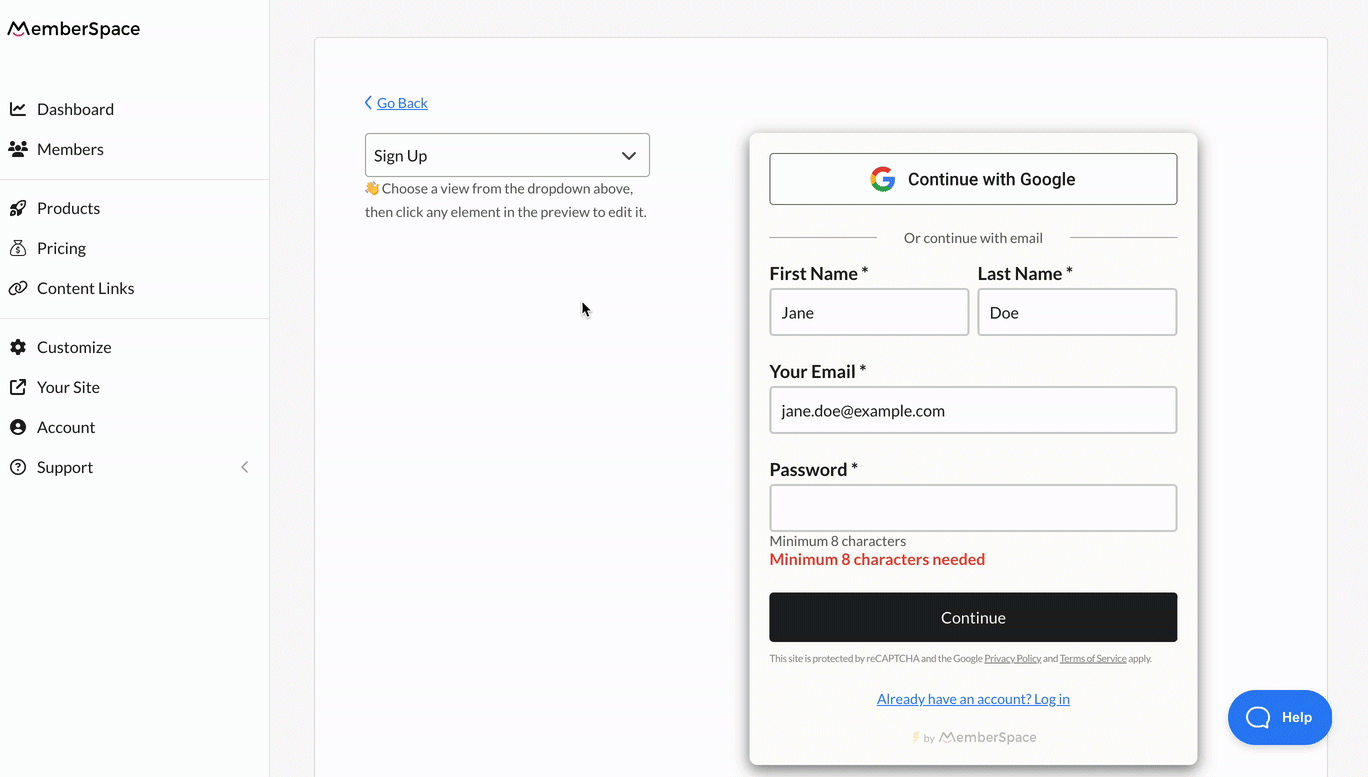
Signup/login form enhancements
In addition to adding Google SSO, we made a few other changes to your signup and login forms to improve your member experience.
When creating an account from scratch, your customers are no longer asked to confirm their email address, which means fewer signup fields to help improve conversion rates.
Additionally, the Create Account and login buttons are now full-width, and we’ve removed the “forgot email?” link to minimize confusion (though, members can still get help logging in to their accounts via the “forgot password?” link!).
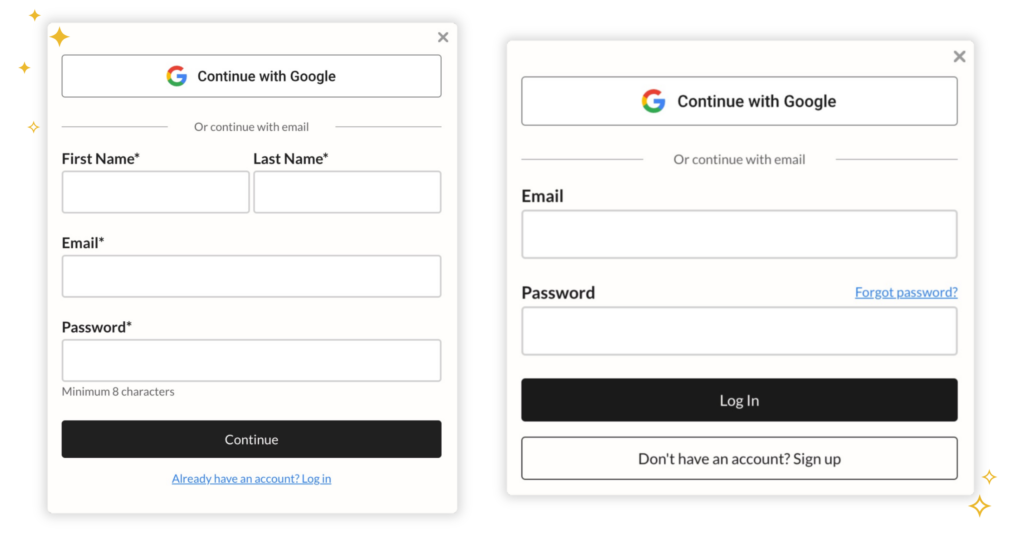
The default text for your Create Account button has also changed, though this doesn’t affect any customizations you may have made to your Create Account button in your MemberSpace admin.
Improve conversions with after signup fields
To further improve your customer signup experience (and facilitate conversions!), we recommend saving all of your custom signup fields until after signup. Keeping signup fields to a minimum is a proven way to turn more website visitors into customers.
Once a customer has created an account (or continued with Google SSO) and has officially joined one of your plans, they’ll be asked to provide any additional information.
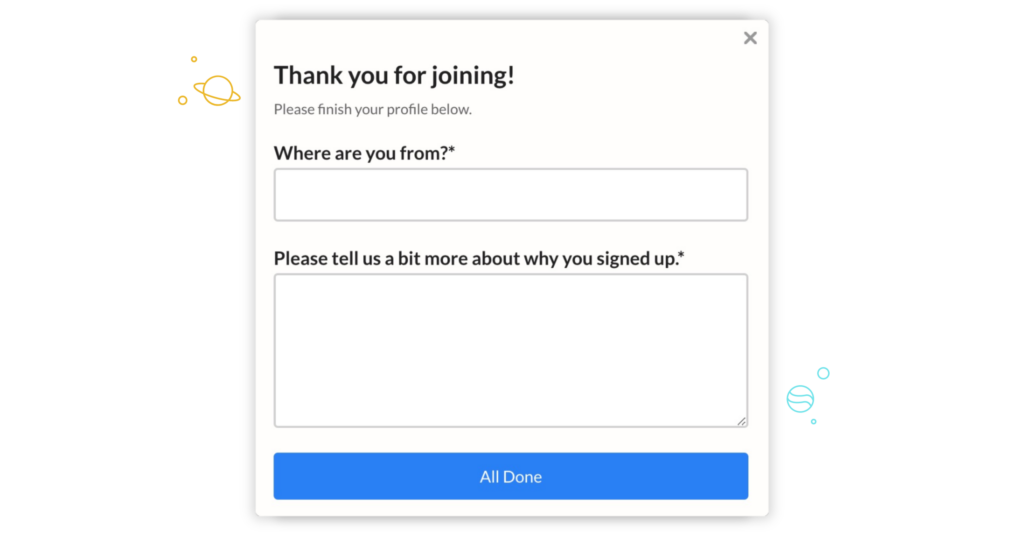
If your after signup fields are required, customers won’t be able to close the popup until they’ve completed the form. And now, if a customer refreshes the page, the popup will continue to reappear (regardless of the page they visit on your website) until the signup fields are completed!
Coming soon!
reCAPTCHA is being replaced
You asked, we listened…
reCAPTCHA will be soon replaced by an alternative security system that works in the background and is not noticeable by your members 99%+ of the time. This should lead to a faster and smoother signup process among other things. No more confusing bus pictures or sidewalks to click! 
If you still prefer to use reCAPTCHA on your site, you’ll have the option to turn it back on within your Look & Feel editor.
Enable Google SSO
The post New feature: Easier member signup appeared first on .
If Memberspace is of interest and you'd like more information, please do make contact or take a look in more detail here.
Credit: Original article published here.
